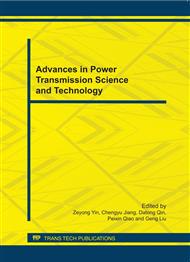p.166
p.170
p.176
p.180
p.184
p.188
p.192
p.196
p.201
Analysis on Thermo-Mechanical Coupling Contact Stress of Cycloid Ball Planetary Drive
Abstract:
According to the structure and its transmission principle of the cycloid ball planetary drive, a thermo-mechanical coupling analysis model of non-backlash cycloid ball engagement pair is developed in this paper. The force formula is derived by using hyperstatic method. Using finite element analysis, the variation of thermo-mechanical coupling contact stress of engagement pair at maximum force position with working temperature has been obtained. The results show that maximum coupling contact stress is located at the load transfer contact points between the ball and the cycloid grooves, and it increases significantly with the increase of temperature. The results obtained offer important theoretical basses for research on reliability of precision cycloid ball engagement pair and design of non-backlash transmission performance.
Info:
Periodical:
Pages:
184-187
Citation:
Online since:
August 2011
Authors:
Keywords:
Price:
Сopyright:
© 2011 Trans Tech Publications Ltd. All Rights Reserved
Share:
Citation:


